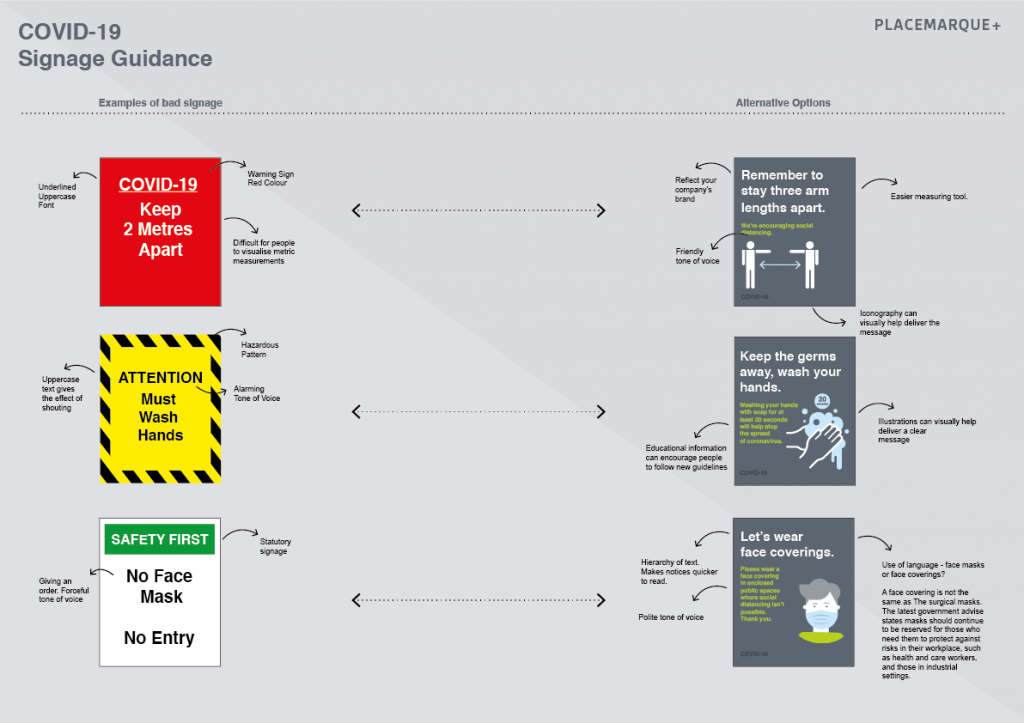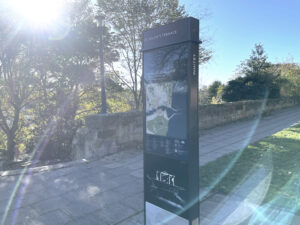We’ve all had our lives turned upside down by COVID-19. And while we still have a ways to go until we’re completely out of the woods, we’re all trying our best to move forward. Plenty of us have already – or soon will be – returning to work. As a result, we’re having to find our footing gradually and adapt to the new normal.
For many of us, this next month will be all about reconfiguring our spaces. As restrictions are lifted and more businesses and public spaces reopen, we are going to have to change how we’re navigating places.
To ensure the safety of our population and ease our transition into the new normal, we believe wayfinding and effective signage have great potential for helping us through this situation and making the transition easier, safer, and more effective.
Practical changes to our use of space
Given the long-term nature of social distancing guidelines, offices and buildings everywhere are reconfiguring their spaces with COVID-19 regulations in mind.
Whether it’s using corridors as one-way streets, restricting access or flow in certain areas, or thinking carefully about the use of entrances and exits, offices, retail units, and wider city centres are all rethinking how visitors gather and move around.
There are plenty of practical ways to reroute a space and create movement strategies that reduce crowding and comply with distancing guidelines.
At Placemarque, we always encourage the use of maps so visitors can see alternative routes – whether we do this in a city or a building. Right now, at Trinity College’s campus in Dublin, we’ve drawn mapping that is easy to understand and isn’t over stylised. It gives visitors multiple routes, reducing the amount of people going any one way. And its simplicity means users can make the most of quieter paths without worrying about getting lost.
Some buildings or spaces may also need to think about encouraging the use of their larger areas over the more confined corridors, lifts, or lobbies. It’s about helping people identify where they need to go and providing them with the route options to get there in the safest way possible.
It’s likely that some spaces may not allow these safer alternatives. If this is the case, releasing pre-visit information onto a website or in the form of a pamphlet can let visitors know ahead of time where they need to go and how to navigate their way quickly. It keeps people happy and on the move.
A focus on messaging
We’ve all seen plenty of stickers and temporary signs telling us in urgent tones to keep our distance, to not do this or that, and to keep everyone safe. Not only are the tones severe, they’re often also accompanied by urgent, warning-style graphics.
It’s increasingly important to think about the tone of voice you’re using in your signage. We cannot exist for long periods of time in a state of high stress and anxiety. If we did, we’d all risk doing massive damage to our mental health. With this in mind, we need to keep calm, reduce stress levels, and change the way we’re approaching our warnings and recommendations.
It’s worth questioning: are your signs eliciting fear and anxiety in visitors? Are your signs positive, safe, and reassuring or negative, instructional, and cold? Using positive wording and helpful illustrations wherever possible will help to make the signage more engaging and memorable while also looking out for your visitors’ mental health.
Streamlined signage
The new normal doesn’t mean you need even more signs. We think there’s a great argument for fewer, clearer communications.
As with all wayfinding, the secret is providing the right information, at the right time, in the right way. Think carefully about what you need to say and where is best to say it. Try to streamline the number of signs you’re using to ensure people will actually read them. Too many signs can be confusing and will create offputting visual clutter.
Going back to our recent work at Trinity College, we edited down the amount of directional content we included. Instead, we grouped together destinations into zones or areas, encouraging easy navigation without having to include long lists of destinations. We focused on gently leading visitors through the campus or building, using landmarks and recognisable orientation points, and progressively disclosing the information they need to find where they are going.
The gradual easing of lockdown and returning to work will always be met with some hesitation and fear. We all want to stay safe, be responsible, and make the best decisions. Because of this, it’s even more important we’re using public spaces in the safest of ways. By using wayfinding solutions and signage, we can give visitors the safety and navigational information they need to make the experience of spaces safer and simpler for everyone.
At Placemarque, we’re experts in producing innovative wayfinding solutions. If you would like to discuss your wayfinding needs or have any questions, please contact us today on 0161 241 3174.




